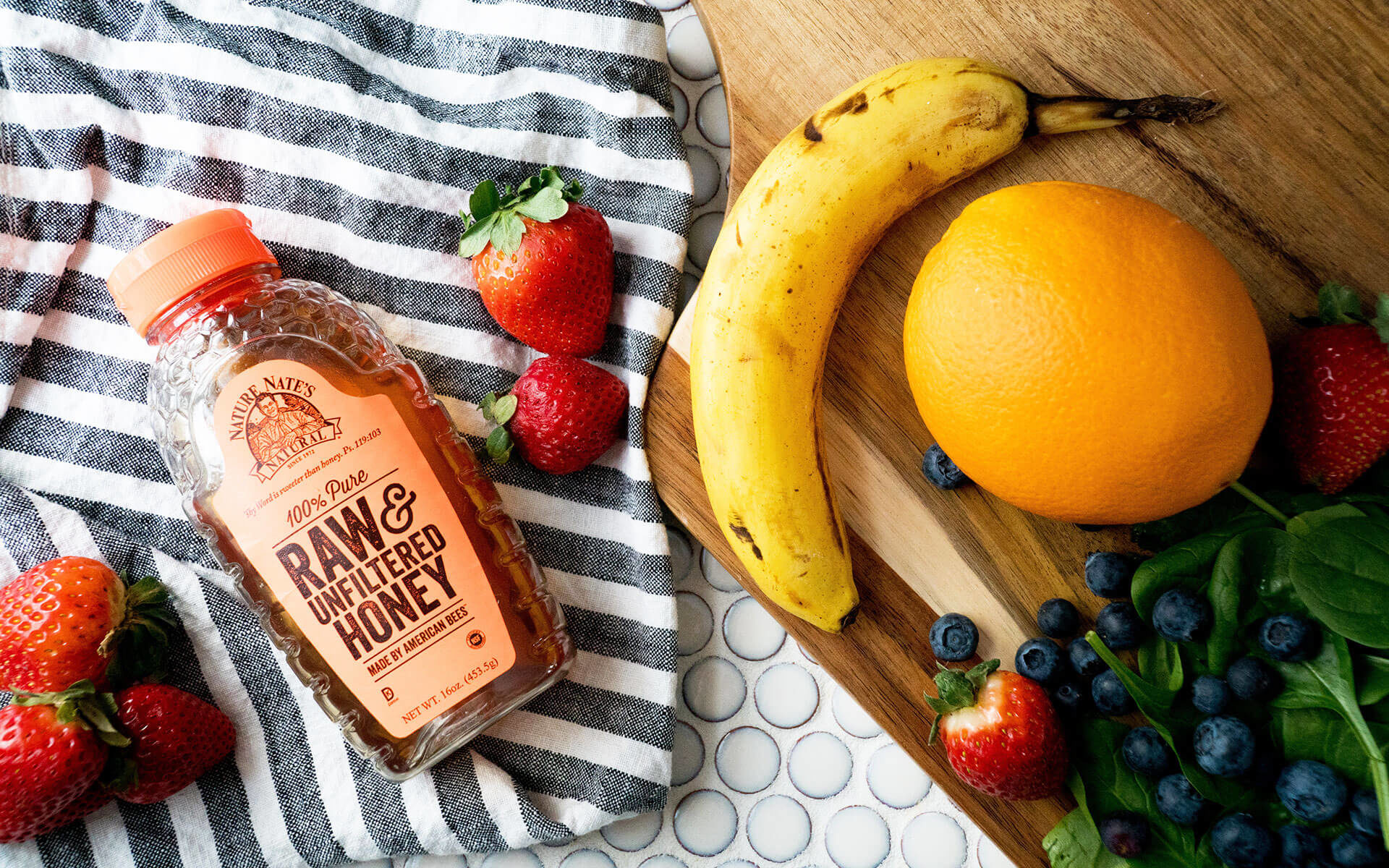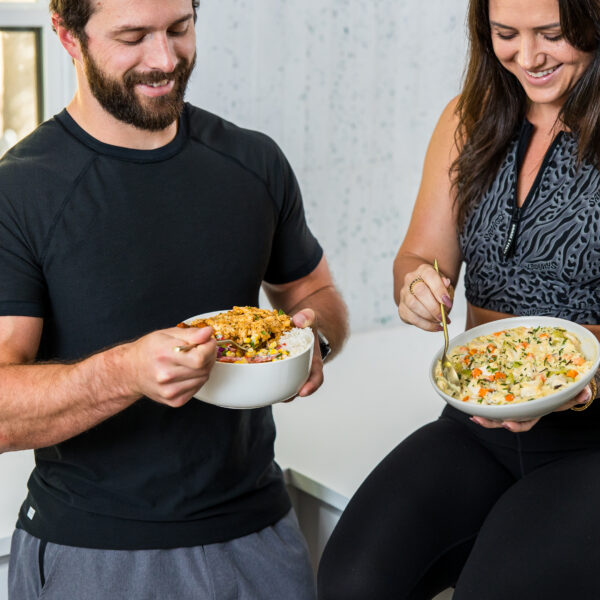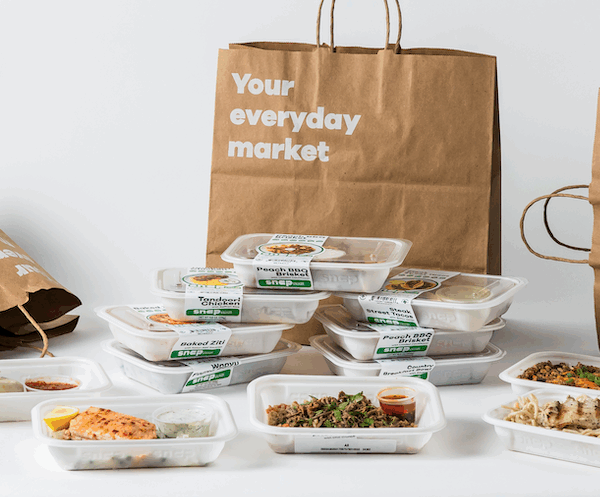We’ve all heard it’s best to minimize our added sugar intake, but sometimes it hides in unexpected places. They’re what we like to call sneaky sources of sugar.
what is sneaky sugar?
Sneaky sugar is added sweetener that’s found in products that you wouldn’t expect. Here are just a few of the places where you can find it hiding.
- salad dressings & condiments (especially low-fat versions!)
- flavored yogurts & oatmeals
- nut butters
- protein & granola bars
- low-fat/low calorie drinks & snacks
- jerky
While one product with a little added sugar isn’t a big deal, these sugar sources can add up quickly and lead to cravings, weight gain & blood sugar issues.
Here at Snap, we’re all about stocking options without sneaky sugars. This includes any of our house-made sauces in our breakfast and lunch/dinner entrees as well as the third party products we carry. Here are a few of our faves:
Coconut Cult
The New Primal Beef Thins
Chomps Sticks
Tessemae’s Dressings
Thunderbird Bars
RX Bars
Sound Sparkling Tea
the difference between natural and added sugar
It’s important to note that there are two different types of sugars; added and natural. These days, food labels do some of the work for you by specifying which type is included in the product. Natural sugars are those that are naturally present in the product, whereas added sugar has been added during the processing of the food.
For example, vegetables contain only naturally occurring sugar, while a salad dressing with cane sugar in the ingredients would have added sugar. You’ll notice that certain foods like plain yogurt (and the above vegetable example) have a few grams of sugar in the nutrition facts, but none listed in the ingredients. That’s because these foods only have natural sugar with nothing extra added.
However, it’s important to read labels with a critical eye, since not all natural options are created equal. For example, orange juice technically has only naturally occurring sugar, but it has a ton of it. An actual orange has ~10-13 grams of sugar (plus beneficial fiber that helps slow digestion) whereas a glass of orange juice can have upwards of 30-40 grams worth (or 3-4 oranges worth!). That will be processed by your body more like soda than fruit. The short story: just because a label has only naturally occurring sugar listed on the nutrition label doesn’t mean it’s a healthy choice.
how do you spot them?
Always read food labels & ingredients! While this may seem tedious at first, the more you do it, the easier it will become. To find sugar on the nutrition label, scan down past carbohydrates and fiber. There, you’ll find total sugar, along with how many of those grams come from added sugar. When it comes to the ingredients, it can be a bit harder to spot, since it’s got so many different names! It’s particularly important to read the ingredients, since even if a product has 0 grams of sugar, it can still have natural or artificial non-caloric sweeteners. While we’re not big fans of this type of sweetener, we’ll save the explanation for a future post.
Here’s a few you can look for: high-fructose corn syrup, dextrose, fructose, glucose, rice malt, agave nectar, lactose, cane juice, and more.
As far as non-caloric sweeteners, here are a few of the most common: erythritol, stevia, monk-fruit extract, aspartame, xylitol, and many more.
looking for alternatives?
While we recommend limiting your sugar intake in general, we also know that avoiding it altogether is nearly impossible. That’s why we’re sharing a few of our favorite more nutrient-dense options below. Keep in mind that even though these are healthier options, sugar is still sugar. Always strive to fill your plate with lots of veggies, protein and healthy fats first and foremost.
Our favorite natural sweeteners include: dates, maple syrup, raw honey and coconut sugar. The next time you’re baking or reading a food label in store, look for these instead of the more processed options you typically find on store shelves.
Want to eat healthy without all the label reading? Check out our dietitian-curated meal plans!





Leave a Reply
2 Comments
This subject came at the perfect time.! I’m slowly losing excess pounds so I count every calorie that goes in my mouth. Recent bloodwork for Jim, my husband, showed his glucose was fine but A1C was on the line. The doctor told him to “quit eating white bread.” Not helpful since that’s been off the menu for a long time. But in looking at our choices, if I need a sweetener in my coffee, I opt for monk fruit because of the zero calories; he uses honey. Smoothies we use dates and maple syrup. So what’s the best answer for people in out situation? I’ll be 70 this year and he’ll be 71. We always opt for 0 added sugars and sweets are usually limited to oatmega bars, perfect bars, or Rx bars. We’ve learned so much from Snap kitchen from what snacks to buy to ingredients in our foods. We love the food; fresh, clean and healthy. Any additional insights you can give us on honey vs monk fruit or trivia?
Aren’t doctors just so helpful? I always recommend natural sweeteners. Non-caloric sweeteners don’t allow your palate to adapt and don’t enable you to redefine what sweet is. They also trick your body into thinking that it’s going to be receiving something sweet (since it tastes sweet), so often you can even have a blood sugar/insulin response even though you’re technically not eating actual sugar! There are also potential negative gut impacts from eating non-caloric sweeteners.
I’d recommend giving fat in your coffee a try (something like coconut milk or nut pods) to give the coffee a nice flavor without sweetening it. If you do need to sweeten things, I always recommend a small amount of a truly natural sweetener (dates, honey, maple syrup). Keep in mind that even natural sweeteners like dates still pack quite a lot of sugar, so make sure you’re only using a small portion. I’d generally only use things like Rx bars, perfect bars, etc when you are out and about without food or you just really feel like you want a sweet treat. Otherwise, keep snacks more savory as they’ll generally be more satisfying (hard boiled eggs, bacon’s heir pork clouds, the new primal beef thins, springboard nuts, nick’s or chomps sticks, our chicken nuggets with ranch, etc). As you can wean yourself off of sweets, you’ll notice that you have less sweets cravings and need less sweet to satisfy. When you are having sweets cravings, sometimes eating a fat or protein-rich snack can actually do a better job satisfying cravings rather than sugar.
As long as your diets on the whole consist of mostly protein, healthy fats (avocado, olives, extra virgin olive oil, avocado oil, nuts/seeds, coconut, grass-fed ghee, etc), and veggies (fiber!), you’re in good shape! Thankfully, most of our Snap meals fit the bill. Sounds like you’re both doing a great job!
-Sam